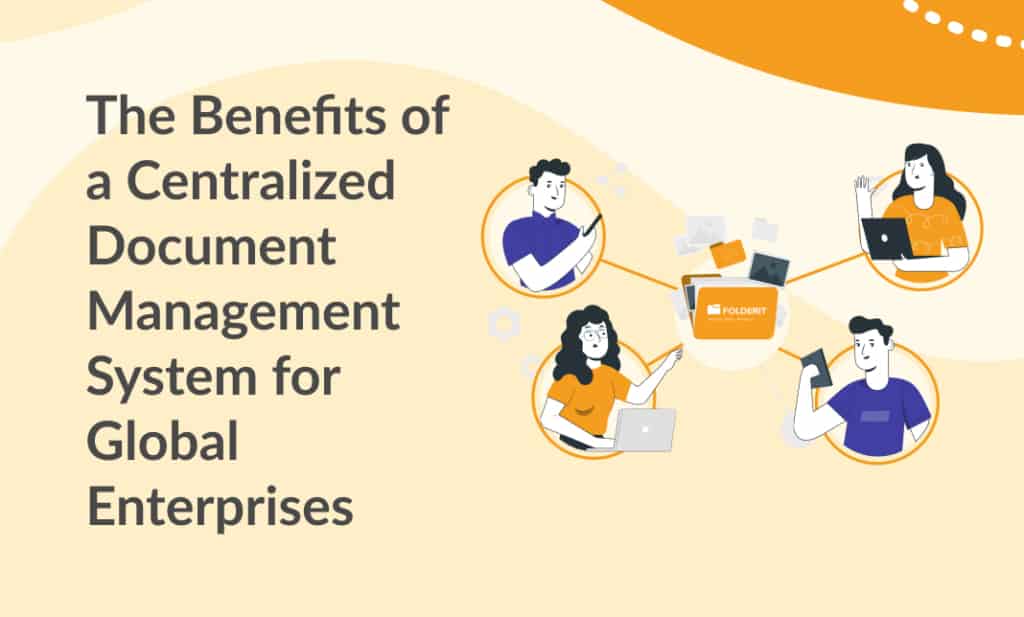Embracing Digital Transformation in Business Operations
The rapid evolution of technology has transformed the way businesses operate, particularly in the realm of information management. As global enterprises continue to expand, the need for efficient and secure document management becomes increasingly crucial. Centralized document management systems (DMS) have emerged as a powerful solution to address these challenges, offering numerous benefits to large-scale organizations.
1. Enhanced Collaboration and Communication
A centralized DMS facilitates seamless collaboration and communication among employees across different locations by providing real-time access to documents. This streamlined approach to information sharing fosters better communication and teamwork, ultimately leading to improved productivity and efficiency. Moreover, advanced features such as version control, check-in/check-out, and audit trails allow teams to track document changes and maintain accountability throughout the organization.
2. Robust Security and Compliance Measures
Protecting sensitive data is a top priority for any business, and a centralized DMS offers robust security measures to safeguard your documents. Advanced encryption, role-based access control, and two-factor authentication help prevent unauthorized access and data breaches. Moreover, a centralized DMS can assist global enterprises in adhering to regional data protection regulations, such as GDPR, by providing tools for tracking, managing, and reporting compliance-related activities.
3. Streamlined Business Processes and Workflow Automation
A centralized DMS promotes efficiency by automating and standardizing various business processes, such as document approval workflows, retention policies, and metadata management. This automation reduces manual intervention, minimizes human errors, and saves time, allowing employees to focus on more strategic tasks. Furthermore, process standardization ensures consistency across the organization, leading to better overall performance and decision-making.
According to a McKinsey report, ‘employees spend 1.8 hours every day searching and gathering information. On average, that’s 9.3 hours per week! Put another way, businesses hire 5 employees but only 4 show up to work; the fifth is off searching for answers, but not contributing any value.’
4. Wide Range of Industries and Use Cases
From healthcare to education, legal services to engineering, a centralized DMS serves a wide range of industries and use cases. It streamlines the management of essential documents, such as contracts, intellectual property agreements, employee records, student grades, and more. By implementing a centralized DMS, businesses across various sectors can optimize their operations and enhance their overall efficiency.
5. Scalability and Flexibility
As your organization grows, a centralized DMS can easily adapt to meet the demands of increased data volume and user count. Its cloud-based nature allows for seamless scaling without the need for significant infrastructure investments. This flexibility enables global enterprises to stay agile and responsive to changing business requirements, ensuring continued success in a competitive landscape.
6. Integration with Other Enterprise Solutions
Centralized document management systems can be integrated with other enterprise solutions, such as Enterprise Resource Planning (ERP) systems, Customer Relationship Management (CRM) software, and e-signature platforms like DocuSign. This integration creates a cohesive digital ecosystem that simplifies and streamlines processes across the organization, enhancing overall efficiency and productivity.
7. Cost Savings and Return on Investment
Investing in a centralized DMS can lead to significant cost savings for global enterprises. By reducing paper usage, storage space requirements, and manual labor, businesses can lower their operational expenses. Moreover, the increased efficiency and productivity resulting from a centralized DMS can contribute to higher revenues, thus providing a strong return on investment.
8. Improved Document Retrieval and Accessibility
A centralized DMS offers powerful search capabilities, including Optical Character Recognition (OCR) technology, which allows users to search for documents based on their content. This feature enables employees to quickly locate and access essential information, streamlining business processes and improving overall efficiency. In addition, cloud-based DMS solutions ensure that documents are accessible from any device with an internet connection, facilitating remote work and providing employees with the flexibility to access critical information when and where they need it.
9. Disaster Recovery and Business Continuity
A centralized DMS serves as a reliable backup solution, ensuring that your valuable data is protected in the event of a disaster, such as a natural catastrophe, cyber attack, or human error. With multiple backups and redundant storage systems in place, your documents remain secure and accessible even in the face of unforeseen circumstances. This robust data protection strategy contributes to business continuity and helps maintain the trust of your clients and stakeholders.
10. Environmental Sustainability
By transitioning to a paperless work environment, global enterprises can significantly reduce their environmental impact. Implementing a centralized DMS not only minimizes paper usage but also cuts down on the energy consumption associated with physical storage, transportation, and waste disposal. In turn, this eco-friendly approach supports corporate social responsibility initiatives and enhances the organization’s reputation as a sustainable and environmentally conscious entity.
Conclusion: Investing in a Centralized Document Management System
In an increasingly interconnected and competitive business landscape, global enterprises must leverage technology to streamline operations and maintain a competitive edge. A centralized document management system offers numerous advantages, from improved collaboration and security to cost savings and environmental sustainability. By embracing this powerful solution, businesses can optimize their information management strategies, enhance overall efficiency, and drive success in the digital age.



